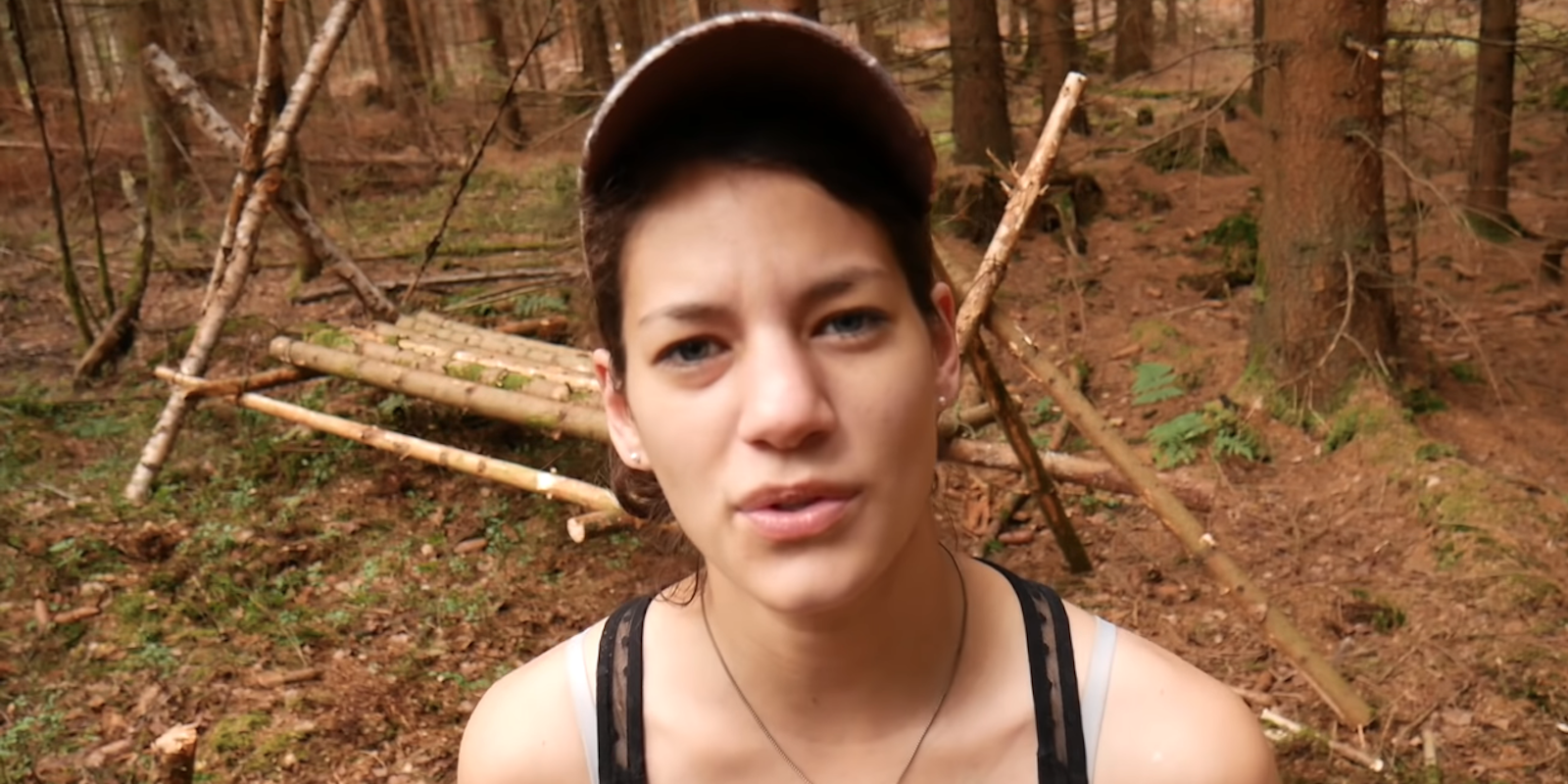It might be hard for us to imagine, but for the majority of human history, people had to figure out how to live in the wild. Our ancestors built shelters, cooked food, and fought off the occasional bear, using nothing more than their wits and the tools they created with their own hands. Sure, a lot of them got eaten by animals or died of exposure, but on the upside, they never had to worry about getting kicked out of a cafe because the barista decided buying one small coffee didn’t justify four free hours of Wi-Fi.
Nowadays most of us couldn’t start a fire without matches, let alone build an entire shelter. Fortunately, there’s a small, but growing, group of people setting out to change that. They’re using some of humanity’s latest inventions, namely digital video cameras and the internet, to show us how to make early inventions like stone axes and rope.
The wilderness skills they’re teaching are collectively known as “bushcraft,” and there’s been an explosion of these YouTube “bushcrafters” in the past few years. Their videos range from six-minute tutorials about how to properly split wood all the way up to full series with 45-minute episodes detailing how to make large multi-person shelters.
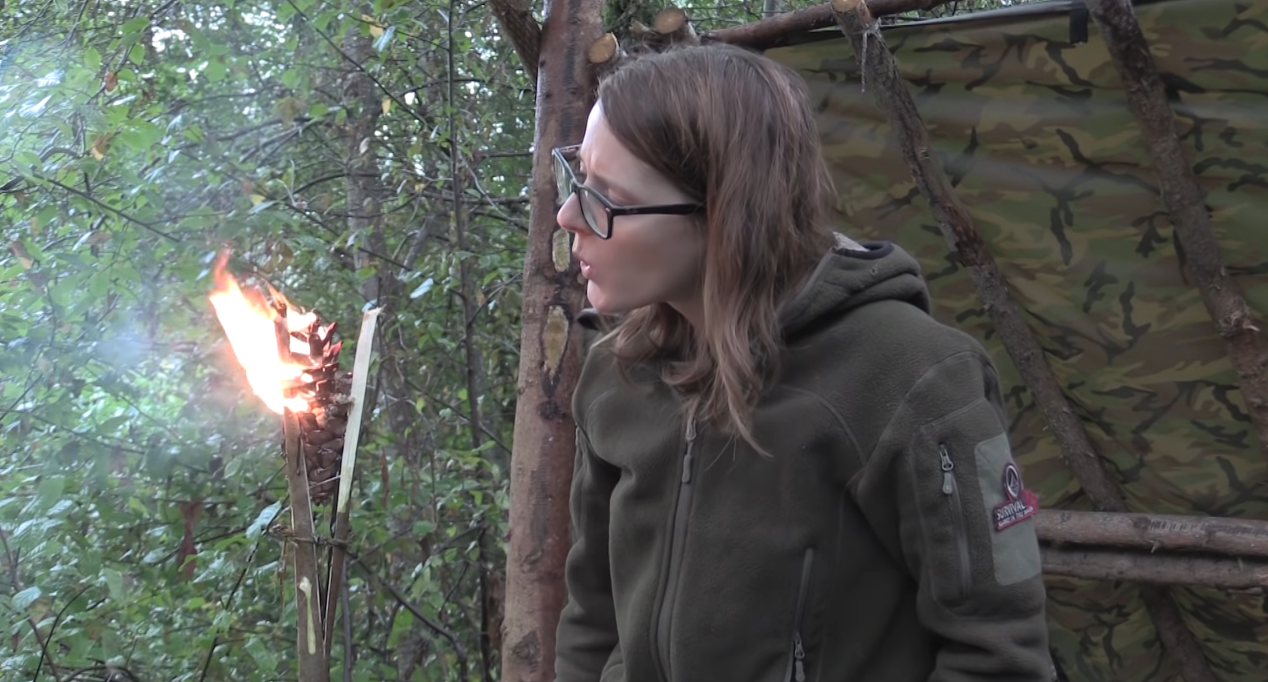
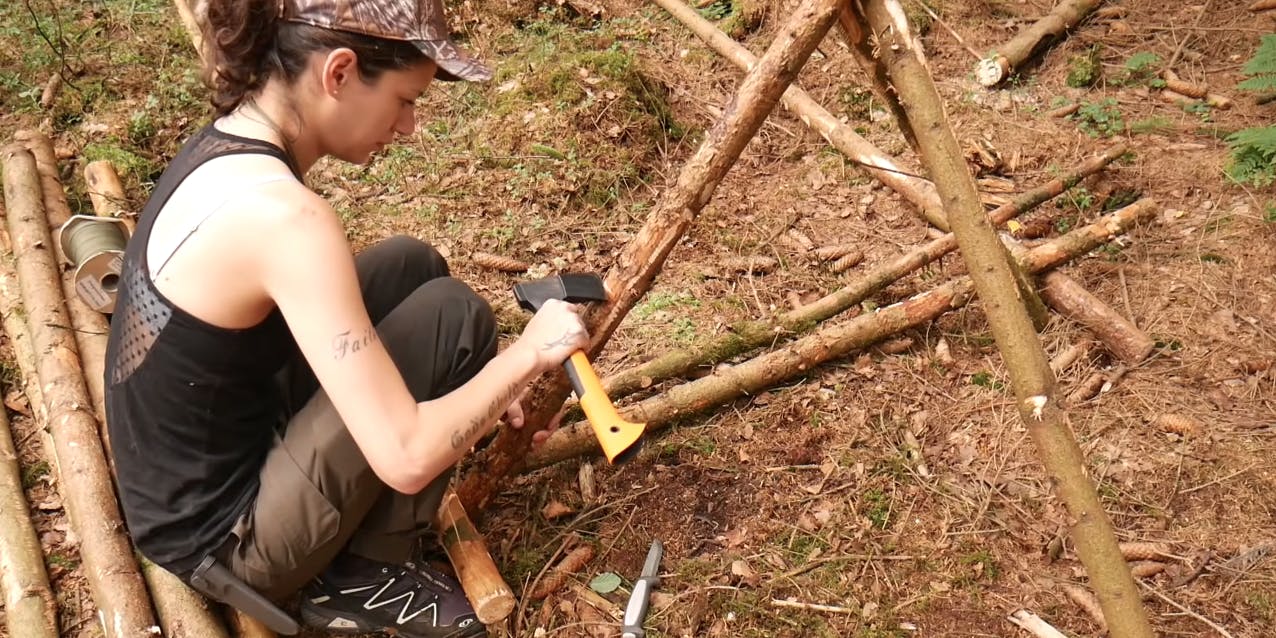
One of the main things that set these bushcraft videos apart from something like a camping video is their use of simple tools. Watching hours of these videos make it clear that the average YouTube bushcrafter prides themselves on using minimal tools, and the more primitive the better. Many of the hosts of these channels bring little more than a knife, an ax, and a little bit of food into the woods with them—often for days at a time.
The most extreme version of this obsession is a channel called “Primitive Technology“. The channel features host John Plant of Queensland, Australia constructing things in the forest using only his bare hands and the tools he’s already made in earlier videos. While the videos have lengthy descriptions detailing his work, Plant never speaks while one camera. “I get straight into the project instead of wasting the viewer’s time,” he told the BBC in a 2018 interview.
One of Plant’s earliest videos begins with him sitting bare-chested in the forest banging two rocks together. Eventually, after enough banging and scrapping, one of the stones becomes sharp. He then uses a different stone to chop down a small tree. He uses a stone chisel he also constructs in the video, along with fire, to shape and harden the tree trunk into a handle. After four minutes of screen time, and who knows how many hours of actual work, he presents the stone ax that will show up again and again in his later videos.
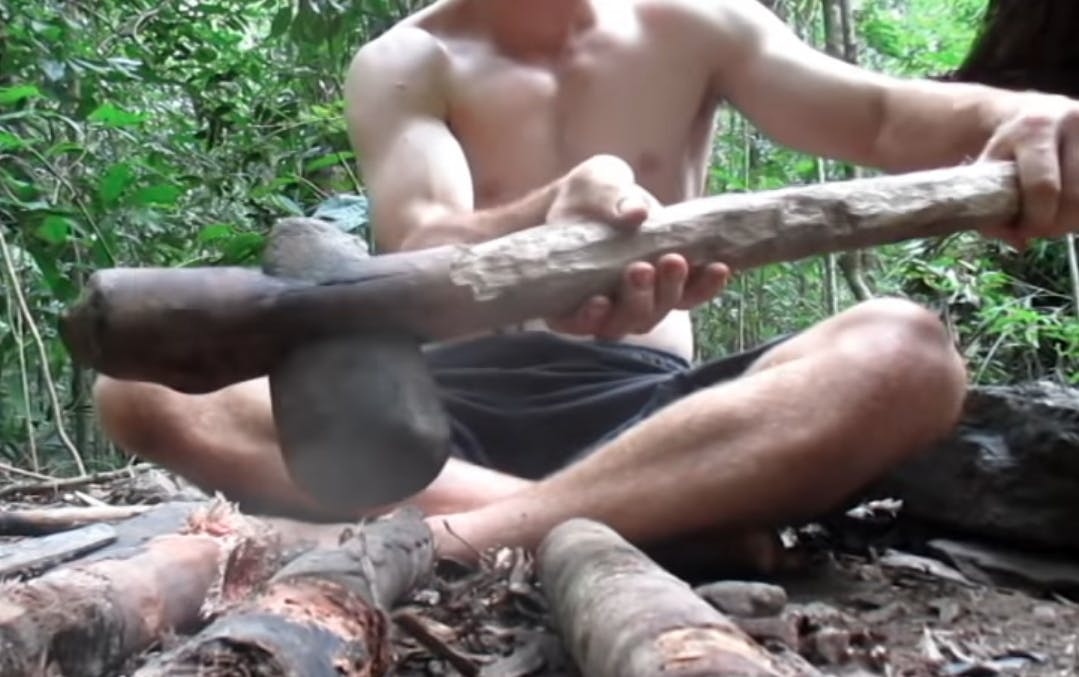
Using the ax and other handmade tools, Plant has managed to construct everything from an adobe hut with a ceramic-tiled roof to a furnace capable of producing iron.
Along the way, he’s also managed to pick up nearly ten million subscribers. Which brings us to the other important aspect of YouTube bushcraft videos: the money.
It’s doubtful that any of these hosts got into bushcraft for the cash. There are, after all, easier ways to make money than chopping wood and lighting fires with a bow drill, but that doesn’t mean there isn’t money to be made by those with the know-how and personality to run a popular channel.
Joe Robinet, a YouTube bushcrafter with over a million subscribers, says that YouTube allowed him to turn his boyhood hobby into a full-time job.
“Its changed everything, for not just myself, but my extended family, and also my wife’s family,” he told the Daily Dot via email. “We moved to our dream home, my wife does not have to work, we are fortunate enough for her to do what she wants, and that is being a full-time Mom. More and more opportunities are coming up all the time because of the channel.”
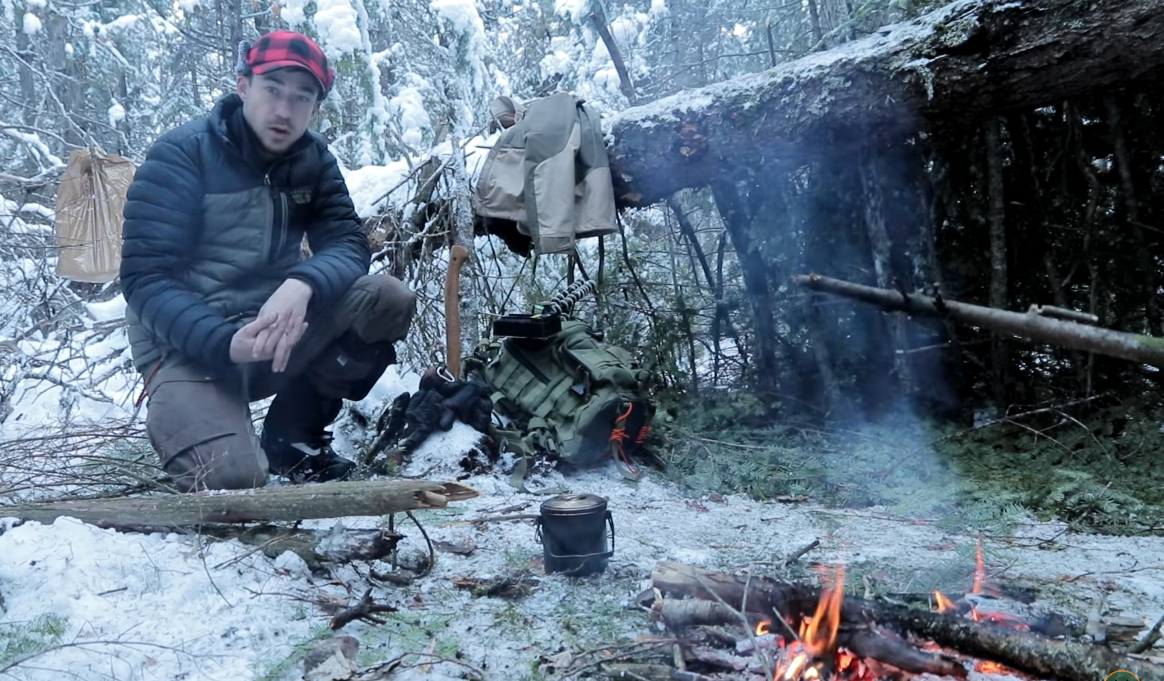
These YouTubers are not making money solely from ad revenue. They also sell merchandise. Pretty much every popular YouTube bushcraft channel also has its own line of clothing, with some hosts partnering with companies to create things like custom designed bushcraft knives.
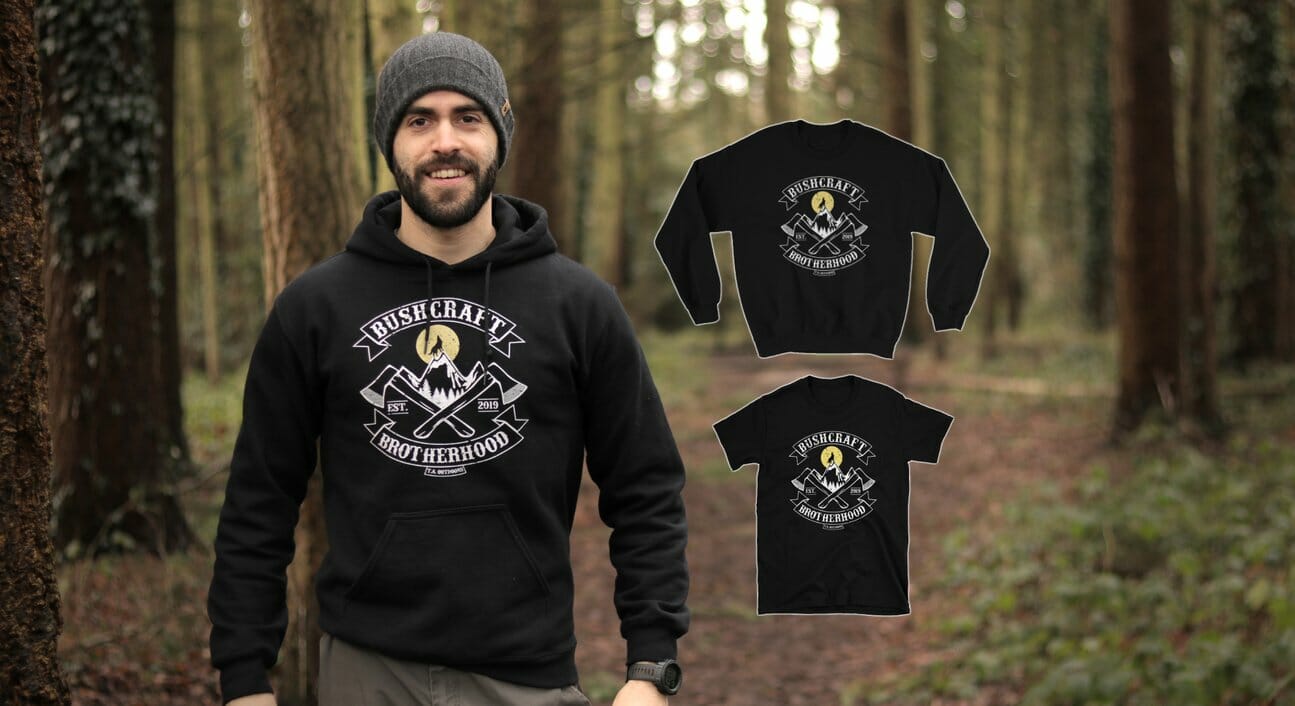
While almost all of the bushcraft videos you’ll find on YouTube are made by people who call themselves amateurs, that doesn’t mean just anyone can go out into the woods and start building themselves a cabin. Time and time again the hosts of these channels emphasize how important knowledge and experience are when you’re trying to stay alive in the woods. Even an experienced bushcrafter like Robinet can find himself in trouble from time to time.
“I almost flipped my canoe three days into the wilderness in the spring,” he told the Daily Dot when asked if he was ever seriously worried about his safety while making these videos. “It rained for the whole trip. Not only did I almost flip, but hypothermia was a real threat throughout the whole trip. I’ve almost been crushed by falling trees. It’s always weather related.”
Staying alive in the woods can be hard enough, but trying to shoot a well-produced video on top of it makes everything even more difficult. While most campers are trying to keep their packs as light as possible, YouTube bushcrafters are cramming cameras, lights, and tripods into their bags, hoping they have not only enough food, but enough battery power to last for days in the forest. Once you realize that all of that stuff also has to stay dry the entire time, you begin to see what a challenge filming can add. A host may struggle for twenty minutes to get a fire going in snowy conditions, only to find out their camera wasn’t correctly focused and they lost the shot.
“It’s just second nature to me by now,” Robison says of filming. “I’ve been doing this for what feels like forever, it adds time, stress, more work, but I’d be bored if I didn’t have to worry about filming.”
Maybe it makes sense that as we become increasingly removed from our primitive roots, these bushcraft videos are becoming more and more popular. We all like to think that, if we really wanted, we could drop out of society and fend for ourselves, somewhere wild and beautiful, and best of all quiet.
If you’re interested in trying out some bushcraft yourself, Robinet says to go for it but start slow. “Just have fun,” he said. “Read Mors Kochanski’s book Bushcraft, try camping with a wool blanket and a tarp in nice, bug-free weather, take it slow, work your way through skills, figure out just what part of bushcraft you enjoy.”
As far as running a successful YouTube channel goes, Robinet is even more succinct. “Do it for fun, not to try to get rich,” he says. “Be yourself and have thick skin.”
That last bit of advice seems like it would apply to both internet trolls and mosquitoes, which are probably equally as annoying to YouTube bushcrafters.
READ MORE:

